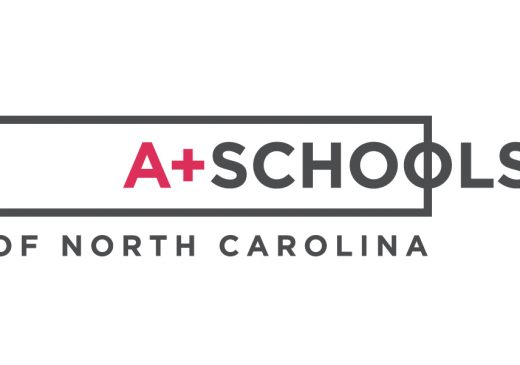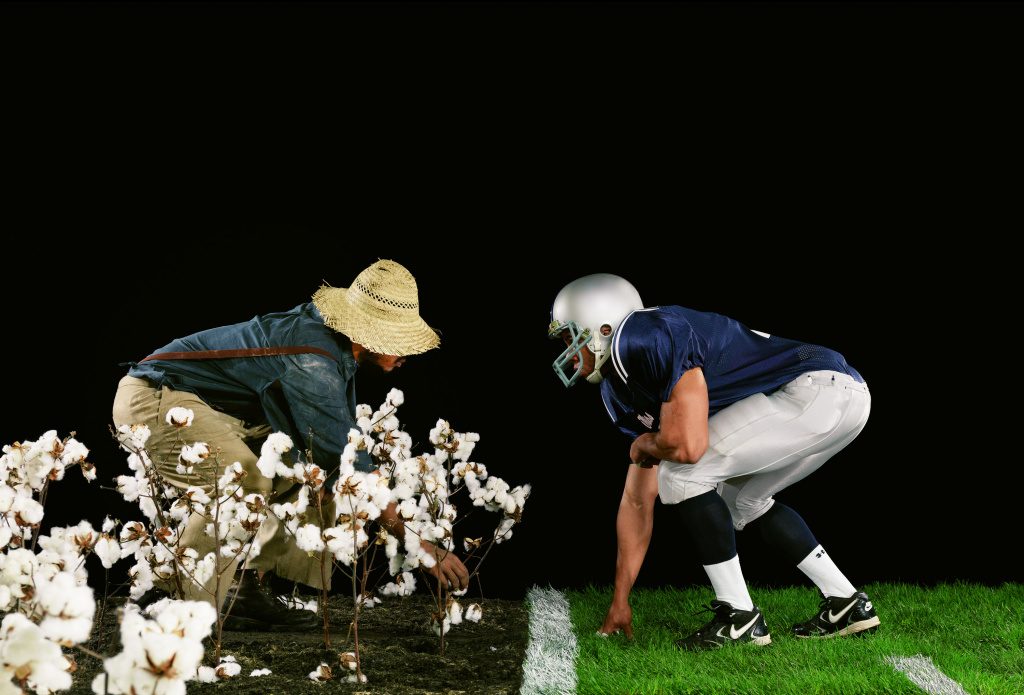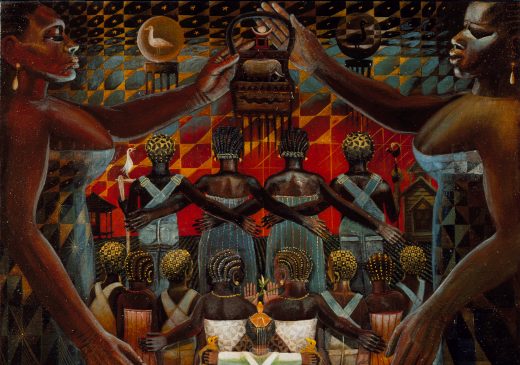Introduction
- Teachers will go over the Essential Questions with the students.
- To support the conversations students will have about racism in the lesson, teachers will review the following resource from Teaching Tolerance and consider incorporating select activities with their students.
- Teachers will lead a conversation to activate prior knowledge and establish relevance with students. Teachers will share the following quote by Chance the Rapper: “The problem is that my generation was pacified into believing that racism existed only in our history books.” Tell students: Turn to your shoulder partner and discuss what you think this quote means. Do you think racism still exists or not? Discuss for 2 minutes.
Connections through Art, Music, and Poetry
- Show The Cotton Bowl and ask the students to look closely at the two parallel sides of the image. What is similar? What is different? What does each figure see, think, and feel? Play the video of the Hank Willis Thomas discussing the use of truth and power in his work. Note that the artist is a contemporary, Black, American male. How does this video add to the students’ thoughts on what the people in the work of art are thinking/feeling/seeing?
- Play the song Strange Fruit. Instruct the students to listen and read the lyrics. Ask students:
- How do you think the song goes with the work of art by Hank Willis Thomas?
- What time period(s) in history do you think each work (the song and the art) are based on?
- What does the term “lynching” mean?
- Share background information with students: Strange Fruit is one of the most well-known songs from the Civil Rights era. The song references the gruesome lynching of Black Americans that had become commonplace in the South. Lyrics include: “Southern trees bearing strange fruit / Blood on the leaves and blood at the roots / Black bodies swinging in the southern breeze / Strange fruit hanging from the poplar trees” Lynching means to put to death, especially by hanging, by mob action and without legal authority.
- Tell the students that The Cotton Bowl is part of the artist’s “Strange Fruit” series. Show this image of another work from the Strange Fruit series. Ask students: Why do you think the artist included both of these works of art in a series called Strange Fruit? How do they relate to the song?
- Have table groups create a Venn diagram detailing what the athlete and fieldworker in The Cotton Bowl each see, think, and feel. In the center of the Venn diagram, instruct students to write the thoughts, feelings, and perspectives the two figures have in common. From this Venn diagram, have partners create a poem in two voices alternating lines from the two perspectives. Encourage students to use parallel structure with their construction.
- Students will read their poems to a partner group alternating readers: one student will voice the perspective of the athlete and the other will voice the perspective of the fieldworker. Ask for volunteers to read their poems to the whole class. Discuss how the creative writing showcases details from the artwork.
Closing
The students will read their poetry. Each will have a note card and choose one student’s work to comment on. Questions for students to consider as their listen to their peer’s poetry:
- What details are used to give each figure’s perspective?
- Where do you see parallel structure?
- What does the poetry make you see/think/wonder?
Written by A+ Fellow Karen Morris



